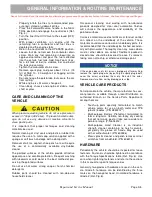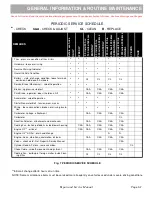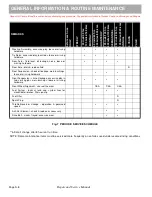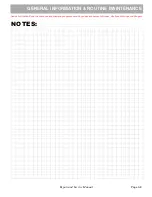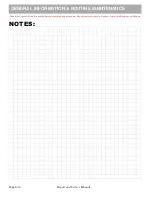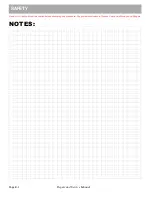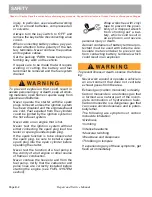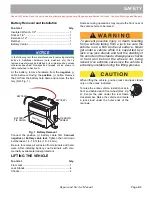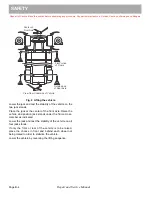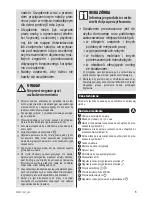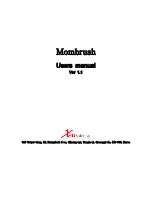
Page A-2
Repair and Service Manual
B
GENERAL INFORMATION & ROUTINE MAINTENANCE
Read all of Section B and this section before attempting any procedure. Pay particular attention to Notices, Cautions, Warnings and Dangers.
sider the safety of yourself and those around you,
should the component move unexpectedly.
Some components are heavy, spring loaded, highly cor-
rosive, explosive, may produce amperage or reach high
temperatures. Gasoline, carbon monoxide, battery acid
and hydrogen gas could result in serious bodily injury to
the technician/mechanic and bystanders, if not treated
with the utmost caution. Be careful not to place hands,
face, feet or body in a location that could expose them to
injury should an unforeseen dangerous situation occur.
Always use the appropriate tools listed in the tool list
and wear approved safety equipment.
Before a new vehicle is put into operation, it is recom-
mended the items shown in the INITIAL SERVICE
CHART be performed.
Fig. 2 Initial Service Chart
FUEL
The fuel tank is located under the seat, on the passen-
ger side of the vehicle. Fill tank with fresh, clean, auto-
motive grade, unleaded, 87 octane (minimum) gasoline.
Heavy use/load applications may benefit from higher
octane gasoline.
DO NOT over fill the fuel tank. Allow adequate space for
the expansion of gasoline. Leave at least 1" (2.5 cm) of
space below the bottom of the filler neck.
Fig. 3 Fuel Tank
When refueling, inspect the fuel tank cap for
leaks or breaks in the housing that could result
in fuel spillage.
To prevent a possible explosion, do not smoke
near the fuel tank or refuel near open fire or
electrical items which could produce a spark.
Always wear safety glasses while refueling to
prevent possible injury from gasoline or gaso-
line vapor.
Do not handle fuel in an area that is not ade-
quately ventilated. Do not permit anyone to
smoke in an area where vehicles are being
fueled.
TOWING
To prevent personal injury, do not ride on vehi-
cle being towed. Do not attempt to tow the
vehicle with ropes, chains or any device other
than a factory approved tow bar. Towing a dis-
abled vehicle can be dangerous and requires
extra caution. Attempting to tow with devices
other than an approved tow bar may result in
severe personal injury or death.
Place direction selector in neutral. The neutral lock
should be used to lock the direction selector in position.
This will reduce the possibility of it moving into ‘F’ (for -
ward) or ‘R’ (reverse) while being towed, causing possible
damage to the rear axle.
ITEM
SERVICE OPERATION
Battery
Charge battery
Seats
Remove protective plastic covering
Brakes
Check operation and adjust if necessary
Establish new vehicle braking distance
Tires
Check pressure
Fuel
Fill tank with correct fuel
Engine
Check oil level
Leave 1” airspace
for ventilation
FUEL
Summary of Contents for EXPRESS L4
Page 6: ...Page iv Repair and Service Manual NOTES TABLE OF CONTENTS ...
Page 207: ......

















